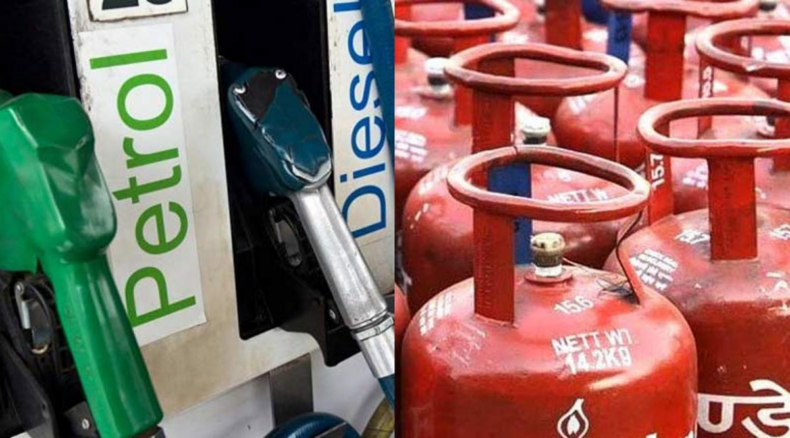Why there is so much hike in gas & fuel prices?
Elevated petrol and diesel prices have already hurt millions of poor Indian households but the steep hike in domestic cooking gas prices has emerged as a bigger concern. A few days ago, oil minister Dharmendra Pradhan said in a written reply in Parliament that LPG prices had doubled in the last 7 years.
Besides the steep hike in LPG prices, several reports indicated that the government had temporarily stopped subsidies on cooking gas in view of the Covid-19 pandemic last year, except in the remotest areas. There are two main reasons behind the fuel price rise.
The international market has reduced fuel production and manufacturing countries are producing less fuel to gain more profit. This is making the consumer countries suffer.
The entire impact of the rise in international crude prices during the period is being passed on to consumers now, as OMCs have restarted price revisions. The price of petrol has risen to Rs 104.6 per liter and the price of diesel has risen to Rs 95.9 in the capital after 13 price hikes in 15 days. The Russia-Ukraine conflict and attacks on oil and gas infrastructure in Saudi Arabia have led to further concerns about potential disruptions in crude oil supplies which have pushed up crude oil prices.
Although the government has plans to marginally increase LPG subsidies, the amount allocated in the annual budget announced last month was much less than in previous years. An amount of Rs 12,480 crore was allocated for LPG subsidies in the Union Budget 2021-22, compared to a much higher allocation of Rs 25,520 crore in 2020-21 and Rs 35,605 crore in 2019-20.

Impact of higher price of gas and fuel on society
Reduced subsidy amounts and a sharp increase in LPG prices have already forced crores of poor Indian households to stop using gas cylinders and instead go back to traditional options that are far more harmful. It not only poses a major health risk for low-income families but also raises questions about one of the most successful welfare schemes launched by the Narendra Modi-led government — the Ujjwala scheme.

It may be noted that there are at least 8 crore extremely poor families who are beneficiaries under the scheme. The Ujjwala scheme was launched five years ago in 2016 by the central government, under which direct cash subsidies were offered for purchasing an LPG connection along with a loan for the first cylinder and stove. Experts said that the Ujjwala scheme is one of the most successful schemes introduced by the central government, but added that it has been petering out because of the price increase. Some of them feel that the failure of the scheme could hurt the government politically.
Moreover, a sharp reduction in LPG usage could also lead to a sharp rise in domestic pollution in many parts of the country. The high rate of fuel prices will have an impact on the automotive sector — a large source of employment in the country — as vehicle sales may see a sharp drop. Harvard University research shows that India has the highest instances of premature deaths in the world due to air pollution caused by burning fossil fuels like coal and oil products. Experts fear that the steep rise in LPG prices will lead to higher usage of alternative solid fuels in poorer households which will trigger major health problems in rural areas, especially among women and children.

Are there any possible measures to reduce fuel or gas prices?
- Push alternatives
Using more biofuels should also help ease the demand for gasoline.
- Require oil companies to make more gas
Supply is the other variable in the gasoline equation, and there are ways to increase it being considered.
- Increase efficiency
Lawmakers are instead focusing on raising vehicle efficiency standards, which have remained basically stagnant for over two decades.
- Build a gasoline reserve
AAA also called for a gasoline reserve as a key way to bring down prices.
- Drill more oil
Of course, oil prices significantly below $60 a barrel would sink gasoline prices in a hurry.
One way of fuel conservation is to avoid their wastage. Switching to alternative sources such as solar energy in the forms of solar heater, solar cookers, use of natural gas and wind energy are some ways to reduce their usage. Since it could take a while before that happens, the government needs to find a speedy solution to the fuel price crisis in order to shield the economy from inflation. Some conservative and sustainable effective measures should be implemented to reduce the burden on people specially middle groups and poor.
Read More – Continuous hike in fuel prices: opposition leaders walks out













